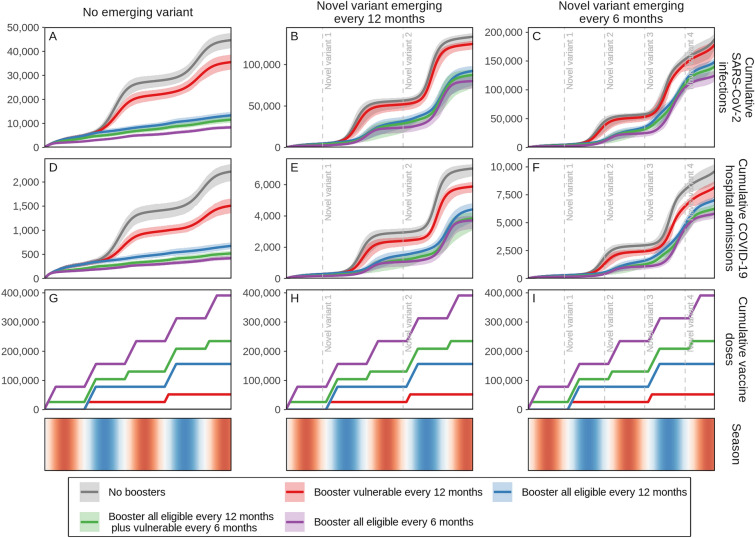Fig. 2.
Cumulative projected impact on SARS-CoV-2 infections and COVID-19-related hospital admissions for just over a 2-year period in a simulated population of 100,000 individuals with those who previously received vaccine doses one and two being eligible to receive first-generation COVID-19 vaccine booster doses. Individuals who received boosters every 12 or 6 months are aggregated in two groups: (1) those most vulnerable, defined as those 60 years and older or persons with comorbidities, and (2) all eligible subjects 5 years and older. For these two groups, scenarios were designed either with no new emerging SARS-CoV-2 variants, assuming the same infectiousness and severity of the Omicron variant (A, D, and G), or with 25% more infectious and immune-evading novel variants with the same severity as the Omicron variant emerging annually (B, E, and H) or biannually (C, F, and I) with initial emergence indicated by vertical dashed lines. Shaded areas represent the stochastic uncertainty surrounding projections. Cumulative number and timing of vaccine doses are shown for each scenario. Seasonality is illustrated in the bottom row where red shading indicates warmer spring and summer seasons, blue cooler fall and winter seasons, and white seasonal transitions. See Figures S6, S7, and S10–S14B in the Electronic Supplementary Material for details

